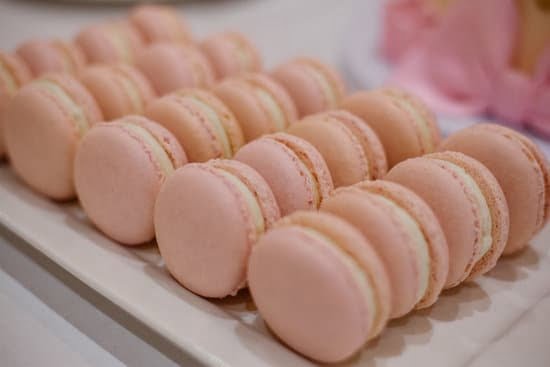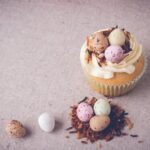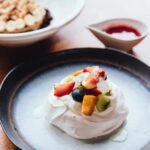Welcome to the Beginner Cake Baking and Decorating Course: Elevate Your Baking Skills.
In recent years, home baking has become an incredibly popular and rewarding hobby for many individuals. Whether it’s for special occasions, a creative outlet, or simply to enjoy the delicious results, more and more people are taking their love for baking to the next level. However, diving into cake baking and decorating can be intimidating for beginners who may not know where to start or lack confidence in their abilities.
That’s where the Beginner Cake Baking and Decorating Course comes in. This comprehensive course is designed specifically for those who are new to the world of cake baking and decorating. By enrolling in this course, you’ll gain valuable knowledge, practical skills, and expert guidance that will elevate your baking capabilities and unlock a whole new realm of creativity.
Taking a beginner cake baking and decorating course has numerous benefits compared to self-teaching methods. Not only does it save you time and money by providing structured lessons, but it also prevents frustration that often comes with trial-and-error learning. Instead of sifting through countless online tutorials and risking failed attempts, you’ll have the opportunity to learn from experienced instructors who know exactly how to guide you through each step of the process.
Throughout this course, you can expect a well-rounded education on all aspects of cake baking and decorating. From mastering fundamental techniques such as measuring ingredients accurately and controlling temperatures to exploring different types of cake bases, frostings, and fillings – every essential skill will be covered in detail. With hands-on practice under the guidance of experts, you’ll develop confidence in your abilities as you progress through each lesson.
Embarking on your journey as a cake baker is an exciting endeavor filled with limitless possibilities for creativity. So why wait? Enroll in the Beginner Cake Baking and Decorating Course today to unleash your inner baker and discover the joy of creating delicious treats that are both beautiful inside and out.
Why Take a Beginner Cake Baking and Decorating Course?
Taking a beginner cake baking and decorating course offers numerous benefits and advantages for individuals interested in developing their skills in the world of baking. While self-teaching is possible, attending a structured course can save time, money, and frustration by providing proper guidance and hands-on experience.
One of the main advantages of taking a beginner cake baking and decorating course is the opportunity to learn from expert instructors. These instructors have years of experience and knowledge in the field, which they can pass on to students through demonstrations, practical exercises, and personalized feedback. They understand the common challenges beginners may face and can provide valuable tips and techniques to overcome them.
Moreover, attending a beginner cake baking and decorating course allows individuals to build a strong foundation in baking techniques. From measuring ingredients accurately to understanding how temperature affects different cake components, these courses cover all essential aspects of successful cake making. Students will also gain confidence in working with various types of cake bases, frostings, and fillings, expanding their repertoire of recipes and flavors.
In addition to honing technical skills, a structured course provides an opportunity for networking with fellow enthusiasts who share similar interests. This sense of community fosters creativity and inspiration as participants exchange ideas, troubleshoot problems together, and even collaborate on projects. The support system established during the course can be valuable long after its completion.
By emphasizing the benefits of attending a beginner cake baking and decorating course such as saving time, receiving expert guidance, learning important techniques, building relationships within a community, beginners are encouraged to invest in their passion for baking by enrolling in such courses.
| Advantages | Description |
|---|---|
| Saves Time | Attending a structured course provides clear direction for learning instead of spending time searching for resources. |
| Expert Guidance | Instructors with experience pass on knowledge and offer individual feedback to accelerate learning. |
| Builds Strong Foundation | Courses cover fundamental baking techniques and allow students to practice and refine their skills. |
| Create a Community | Networking with like-minded individuals promotes collaboration, inspiration, and support beyond the course duration. |
What to Expect from the Beginner Cake Baking and Decorating Course
In the Beginner Cake Baking and Decorating Course, you can expect to gain a comprehensive understanding of the fundamental principles and techniques of cake baking and decorating. The course curriculum is designed to provide you with a solid foundation in baking skills, while also allowing room for creativity and personalization. Here is what you can expect from this exciting course:
- Detailed overview of the curriculum and course syllabus: Before diving into the hands-on experience, you will be given a detailed overview of what topics will be covered throughout the duration of the course. This will help you understand the progression of learning and what skills you’ll acquire at each stage.
- Introduction to fundamental baking techniques: One of the first things you’ll learn is how to accurately measure ingredients, mix them properly, and control temperature during the baking process. These foundational skills are essential for achieving delicious and perfectly baked cakes.
- Exploring different types of cake bases, frostings, and fillings: The course will introduce you to various types of cake bases such as sponge cakes, butter cakes, and chiffon cakes. You’ll also learn how to make different frostings like buttercream or cream cheese frosting, as well as fillings like fruit preserves or chocolate ganache.
The Beginner Cake Baking and Decorating Course is designed for beginners with little to no experience in cake baking. Whether your goal is to impress your friends and family with homemade treats or explore a potential career in baking, this course will equip you with all the necessary skills.
Throughout the course, expert instructors will guide you every step of the way. They will provide demonstrations, offer personalized feedback on your techniques, and answer any questions that may arise during the learning process. The interactive nature of the course ensures that you receive hands-on experience and valuable guidance from professionals in the field.
By the end of the course, you will have gained a solid foundation in cake baking and decorating. You’ll be equipped with the skills and knowledge to confidently bake delicious cakes, create beautiful decorations, troubleshoot common issues, and even explore your creativity by personalizing your creations.
Taking a structured Beginner Cake Baking and Decorating Course can save you time, money, and frustration compared to attempting to self-teach. The guided instruction and hands-on practice provided in this course will accelerate your learning journey and set you up for success in your future baking endeavors. So why wait? Sign up for the Beginner Cake Baking and Decorating Course today and elevate your baking skills to new heights.
Essential Baking Tools and Ingredients for Beginners
When it comes to baking cakes, having the right tools and ingredients is essential for success. As a beginner, it’s important to invest in a few key items that will make your journey into cake baking and decorating much easier.
Below is a comprehensive list of must-have baking tools and equipment, as well as an explanation of key ingredients and their roles in cake baking and decorating. Additionally, we’ll provide some recommendations for budget-friendly options if you’re just getting started.
Baking Tools:
- Mixing Bowls: It’s helpful to have a variety of sizes to accommodate different recipes.
- Measuring Cups and Spoons: Accurate measurements are crucial for consistent results.
- Electric Mixer or Stand Mixer: While not absolutely necessary, these tools can save time and effort when mixing cake batter or frosting.
- Rubber Spatulas: Perfect for scraping down the sides of bowls or folding ingredients together.
- Cake Pans: Start with basic round or square pans in various sizes.
- Cooling Racks: Allow cakes to cool evenly by providing proper air circulation.
Baking Ingredients:
- Flour: All-purpose flour is commonly used in most cake recipes, but specialty flours like cake flour can yield lighter textures.
- Sugar: Granulated white sugar is the most common sweetener used in cakes. Powdered sugar is essential for making frostings.
- Eggs: Act as binders and add structure to the cake’s texture.
- Butter or Margarine: Provides moisture, flavor, and contributes to the overall texture of the cake.
- Baking Powder and Baking Soda: Leavening agents that help cakes rise during baking.
- Vanilla Extract: Enhances flavor in both the cake batter and frostings.
If you’re on a budget or unsure if cake baking is your passion just yet, there are still plenty of cost-effective options available. For example, you can find reasonably priced baking utensils and tools at kitchenware stores, online marketplaces, or even second-hand stores. Additionally, consider purchasing store-brand ingredients instead of name brand options to save money without compromising the quality of your cakes.
By having the essential baking tools and ingredients on hand, you’ll be well-prepared to begin your cake baking and decorating journey. Remember that practice makes perfect, so don’t be afraid to experiment and try new recipes. The joy of creating delicious and beautifully decorated cakes from scratch is within your reach.
Step-by-Step Guide to Baking Your First Cake
Prepping the pans
To start baking your first cake, the first step is to prep your pans. Here’s a step-by-step guide to help you through this process:
- Choose the right pan: Depending on the type of cake you want to bake, select the appropriate size and shape of the pan. Common options include round, square, and rectangular pans.
- Grease and flour: To ensure your cake doesn’t stick to the pan, grease it with butter or cooking spray. Then, lightly dust it with flour, tapping out any excess. This will create a non-stick surface for easy removal after baking.
Measuring ingredients accurately
Accurate measurement of ingredients is crucial for successful cake baking. Follow these steps for precise measurements:
- Use dry measuring cups for dry ingredients: When measuring flour, sugar, or cocoa powder, spoon the ingredient into the cup without packing it tightly. Level off the excess using a straight edge tool.
- Use liquid measuring cups for liquids: Place the cup on a flat surface and pour in the liquid ingredient until it reaches the desired marking at eye level.
Following a recipe
Following a recipe is essential to ensure that your cake turns out as intended. Consider these tips when working with recipes:
- Read through the entire recipe before starting: Familiarize yourself with all the steps and ingredients needed beforehand.
- Gather all necessary ingredients and equipment: Having everything prepared ahead of time will make the baking process smoother and more efficient.
Achieving a level and evenly baked cake
To achieve a level and evenly baked cake, follow these tips:
- Distribute batter evenly in pans: Pour an equal amount of batter into each prepared pan to ensure even layers.
- Rotate pans halfway through baking: In most cases, ovens have hot spots, so rotating the pans halfway through the baking time will help ensure even baking.
- Test for doneness: Insert a toothpick or cake tester into the center of the cake. If it comes out clean or with a few moist crumbs, the cake is done.
By following this step-by-step guide, you’ll be well on your way to baking your first delicious and beautifully baked cake.
Please note that this guide provides general instructions, and it’s important to refer to specific recipes and instructions provided in your course materials for more detailed guidance.
Mastering Cake Decorating Techniques
Introduction to Various Cake Decorating Techniques
In the Beginner Cake Baking and Decorating Course, you will not only learn how to bake delicious cakes but also master the art of cake decorating. This section of the course is designed to introduce you to various cake decorating techniques that will elevate your cakes from basic to beautiful works of art.
Whether you’re planning to bake for yourself, friends, or even start a baking business, these skills will set you apart and impress anyone who sees or tastes your creations.
Step-by-Step Guide on How to Achieve Professional-Looking Decorations
Decorating a cake may seem intimidating at first, but with proper guidance and practice, it can become second nature. In this course section, expert instructors will provide you with a step-by-step guide on how to achieve professional-looking decorations. From piping elegant borders and designs to creating stunning floral arrangements and patterns using different tips and techniques, you’ll gain the knowledge and confidence needed to transform a plain cake into a masterpiece.
The course will cover essential techniques such as buttercream piping, where you’ll learn how to pipe rosettes, shells, dots, and other intricate designs using various nozzles. You’ll also delve into frosting techniques such as spreading and smoothing for flawless finishes. Additionally, you’ll be introduced to fondant-an edible icing that can be rolled out thinly and used to cover cakes for a smooth canvas or sculpted into decorative shapes.
Tips for Creating Stunning Designs
Creating stunning cake designs is all about attention to detail and creativity. Throughout this section of the course, instructors will share valuable tips and tricks for taking your designs from simple to intricate. They’ll demonstrate how to use color effectively, achieve precise piping lines, add texture using different tools, incorporate edible glitter or gold leaf for an extra touch of glamour, and so much more.
To further inspire you, the course will include examples and demonstrations of popular cake decorating trends such as watercolor cakes, ombré effects, and geode-inspired designs. You’ll also learn how to coordinate decorations with various cake themes or special occasions, ensuring that every cake you create is unique and tailored to your specific needs.
So, get ready to unleash your creativity and bring your cake decorating skills to a whole new level in the Mastering Cake Decorating Techniques section of the Beginner Cake Baking and Decorating Course. Whether you’re a beginner or have some experience in baking and decorating, this course has something for everyone. By the end of this section, you’ll be able to create visually stunning cakes that taste just as good as they look.
Troubleshooting Common Cake Baking Issues
Baking a cake can be an exciting and rewarding experience, but it’s not without its challenges. As a beginner, you may encounter some common issues that can arise during the cake baking process. In this section, we will identify these problems and provide tips and tricks to help you prevent and fix them.
One of the most common problems beginners face is uneven rising. This can result in a lopsided or misshapen cake. To ensure even rising, make sure your oven is properly preheated and that you distribute the batter evenly in the cake pans.
Avoid opening the oven door too frequently during baking as it can cause fluctuations in temperature that affect the rise of the cake. Additionally, be mindful of overmixing your batter as this can lead to excess air being incorporated, causing an uneven rise.
Another issue many beginners encounter is a collapsed cake. This is often caused by opening the oven door too soon or frequently during baking or underbaking the cake. When checking for doneness, use a toothpick inserted into the center of the cake – if it comes out clean or with only a few crumbs attached, it’s ready to be taken out of the oven. It’s important to follow recipe instructions accurately in terms of baking time and temperature.
Dry cakes are another concern for beginner bakers. Overbaking can cause cakes to become dry and crumbly. Ensure you’re using accurate measurements for your ingredients to achieve the right balance of moisture in your cakes. Be cautious not to overmix your batter either, as this can also result in a dry texture.
If you do encounter any of these troubles while baking your cakes, don’t panic. There are ways to salvage them. For example, if your cake has collapsed in the center, try leveling it with a knife once it has cooled completely before frosting it. You can also add simple syrup on top of the cake layers to add moisture, or incorporate a fruit filling or frosting to help moisten the cake.
Remember, troubleshooting common cake baking issues is part of the learning process. By understanding these problems and how to prevent them, you can enhance your baking skills and avoid disappointment. With practice and patience, you’ll soon be able to overcome any challenges that come your way as you continue your journey in cake baking and decorating.
Getting Creative
Once you have mastered the fundamental techniques of cake baking and decorating, it’s time to let your creativity shine and make your cakes truly unique. Customizing and personalizing your cakes allows you to add a personal touch, experiment with different flavors and colors, and create stunning designs that will leave a lasting impression. In this section, we will explore how you can take your cake creations to the next level by unleashing your creativity.
Experimenting with Flavors
One of the most exciting aspects of baking is experimenting with different flavors. While classic flavors like chocolate and vanilla are always crowd-pleasers, don’t be afraid to think outside the box. Consider incorporating unique flavor combinations such as lavender-infused lemon cake or coconut rum cake with pineapple filling. By layering various flavors in your cake base, frosting, and fillings, you can create a multi-dimensional taste experience that will impress everyone who takes a bite.
Colorful Designs
Enhancing the visual appeal of your cakes can be just as important as their taste. Step out of your comfort zone by playing with colors in your decorations. Food coloring gels or powders are easy to use and offer a myriad of possibilities for adding vibrant hues to frostings, fillings, or even cake layers.
Use color gradients or mix contrasting shades for an eye-catching effect. Don’t forget about natural food colorings like beet juice or matcha powder if you prefer more organic options.
Creative Designs
When it comes to cake decorating, let your imagination run wild. Try various techniques such as piping intricate patterns using buttercream icing or creating smooth finishes with fondant. You can also experiment with texture by adding edible glitter, sugar pearls, or even fresh flowers to give your cakes an elegant touch. Additionally, consider incorporating personalized elements into your designs such as monograms, favorite themes, or special symbols to make the cake truly meaningful and memorable.
By exploring different flavors, colors, and creative designs, you can take your cake baking skills to a whole new level. Remember that practice makes perfect, so don’t be discouraged if your first attempts at customization don’t turn out exactly how you envisioned them. With time, patience, and continued learning, you will develop your own unique style and create stunning cakes that reflect your personality and creativity.
So go ahead and let your imagination soar. Customizing and personalizing your cakes is not only a fun way to express yourself but also a beautiful gift to share with others. Whether it’s for birthdays, weddings, or any special occasion, the joy of seeing others delight in your creations is truly rewarding. Enroll in a Beginner Cake Baking and Decorating Course today to learn the skills needed to bring your customized cake visions to life.
Conclusion
In conclusion, taking a Beginner Cake Baking and Decorating Course offers numerous advantages to aspiring bakers. Not only does it provide a structured learning environment, but it also saves time and frustration compared to self-teaching. The hands-on experience and guidance from expert instructors are invaluable resources that can greatly enhance your baking skills.
Throughout the course, you can expect to learn a wide range of techniques and concepts that form the foundation of cake baking and decorating. From mastering essential baking techniques to exploring different types of cake bases, frostings, and fillings, the curriculum is designed to provide you with a comprehensive understanding of the craft.
Equipped with this knowledge, you will then be guided through step-by-step instructions on baking your first cake. Accurate measuring, following a recipe, and achieving an evenly baked cake are all covered in detail. Additionally, you will gain proficiency in various cake decorating techniques such as piping, frosting, and fondant application.
As with any creative endeavor, challenges may arise. However, the course also dedicates a section to troubleshooting common issues that beginners may face during the baking process. Tips and tricks for preventing disasters such as uneven rising or dry cakes are shared to ensure your success.
Most importantly, this course encourages creativity and personalization in cake baking. You will be inspired to experiment with flavors, colors, and designs to create truly unique cakes tailored to special occasions or themes. The satisfaction of seeing your creations come to life is immeasurable.
So why wait? Take the leap and enroll in a Beginner Cake Baking and Decorating Course today. Discover the joy of creating delicious masterpieces from scratch while elevating your skills in an enjoyable and supportive environment. This course is just the beginning of your exciting journey into the art of cake baking and decorating.
Frequently Asked Questions
What do you need to start baking and decorating cakes?
To start baking and decorating cakes, you will need some basic equipment and ingredients. First and foremost, you will need an oven to bake the cakes. You will also need mixing bowls, measuring cups and spoons, a whisk or electric mixer for beating the batter, a cake pan or multiple pans of varying sizes depending on your desired cake shape, parchment paper or cooking spray to prevent sticking, and a cooling rack to allow the cakes to cool properly.
In terms of ingredients, you will need flour, sugar, eggs, butter or oil, leavening agents such as baking powder or baking soda, flavorings like vanilla extract, and any additional ingredients specific to your recipe. For decorating the cakes, you will require icing bags with different tips for piping designs or writing on the cake and various colors of icing or frosting.
Can you teach yourself cake decorating?
Absolutely! Cake decorating is a skill that can be self-taught through practice and experimentation. While taking formal classes can certainly accelerate the learning process and provide structured guidance from experienced instructors, it is not necessary to have formal training in order to become proficient in cake decorating.
With the abundance of online tutorials, videos, books, and resources available today, aspiring cake decorators can easily find inspiration and step-by-step instructions to develop their skills at their own pace. By starting with simple techniques and gradually challenging oneself with more complex designs, anyone with dedication and passion for cake decorating can teach themselves this artistic craft.
Which course is best for cake baking?
The best course for cake baking depends on individual preferences and goals. There are various types of courses available ranging from short-term workshops to comprehensive diploma programs. When choosing a course for cake baking, it is important to consider factors such as your current skill level (beginner vs advanced), the specific type of cakes you want to specialize in (e.g., wedding cakes or novelty themed cakes), your budgetary constraints (some courses can be quite expensive), and whether you prefer in-person instruction or online courses.
It can be helpful to research the syllabus, reviews from past students, and the credentials of the instructor or institution offering the course. Additionally, seeking recommendations from experienced bakers or joining online baking communities can provide valuable insights on which course might best suit your needs.

Welcome to our cake decorating blog! My name is Destiny Flores, and I am the proud owner of a cake decorating business named Cake Karma. Our mission is to provide delicious, beautiful cakes for all occasions. We specialize in creating custom cakes that are tailored specifically to each customer’s individual needs and tastes.





